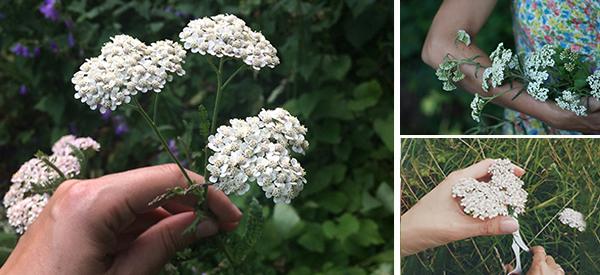
What You Should Know About Foraging Yarrow
Yarrow (Achillea millefolium) has been traditionally used to treat a wide variety of conditions, and it’s still recommended by many herbalists and naturopaths.
Once you know what to look for, and where to look for it, then foraging for yarrow makes for a great day outdoors. And since it is a prolific grower in many parts of temperate North America, foraging for yarrow can be pretty bountiful.
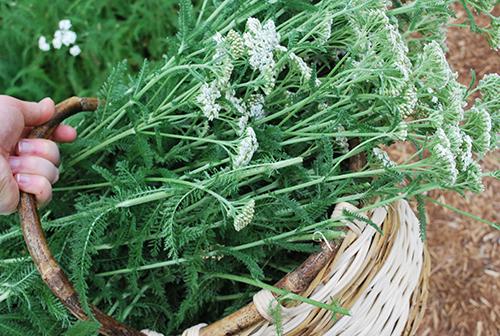
There’s one important rule when it comes to foraging: If you can’t confidently identify it, then don’t harvest it.
How to Identify Yarrow
Yarrow is a perennial herb that produces clusters of white, umbel shaped flowers on tall stalks, similar to Queen Anne’s lace. It can grow up to 3 feet high and spreads via rhizome roots.
Yarrow has feathery, fern-like leaves, similar to chamomile, and when crushed, it smells like a chrysanthemum. The fine leaves are arranged in a whorl around the stem, with the larger leaves at the base. When fresh, they almost have a sticky quality.
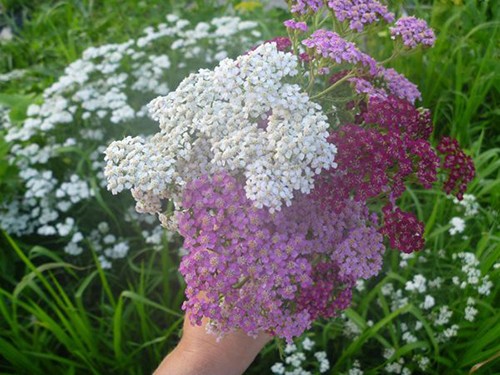
Garden cultivars can have yellow, pink, orange, or red flowers, but wild yarrow tends to be white, and occasionally pale yellow; but interestingly, wild yarrow takes on a pink hue at higher elevations.
Poisonous Look-a-likes
There are a few herbs that look very similar to yarrows, such as Queen Anne’s lace or wild carrot (Daucus carota) sweet fennel (Foeniculum vulgare), but there is one look-a-like that is incredibly poisonous, so it’s important to learn about this imposter.
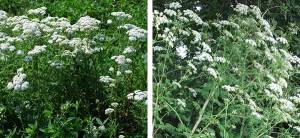
Poison hemlock has similar white flower clusters that also stand on tall stalks, but the stalks have purple spots, are hollow, and tend to be more multibranched compared to yarrow. The flowers can resemble carrots or parsnip, but instead of feathery leaves, poison hemlock has pointed ones, more like flat-leaf parsley.
Where to Find Yarrow
Yarrow is originally from Europe, but luckily for foragers, it is now naturalized across temperate North America.
You can find it in most sunny habitats, such as grasslands and open forests, and like many other colonizing species, it is often found on previously disturbed sites. Check roadsides, old railway easements, vacant lots, churchyards, cemeteries and abandoned plots of land.
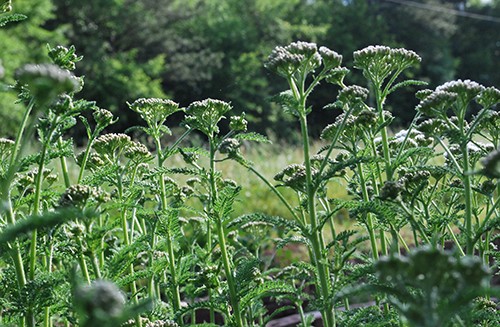
When to Harvest Yarrow
The best time to harvest yarrow is when it is in full bloom. This is usually from mid-spring through to early summer. Yarrow flowers for quite a long period, which is another reason why it makes a great candidate for wild foraging.
The whole plant, except for the roots, is harvested for medicinal uses. It’s best to leave the roots so that it can regrow easily and potentially provide another harvest for either yourself or the next forager.
How to Harvest Yarrow
Once you know what to look for and where to look for it, harvesting yarrow is simple. A pair of scissors is all you need.
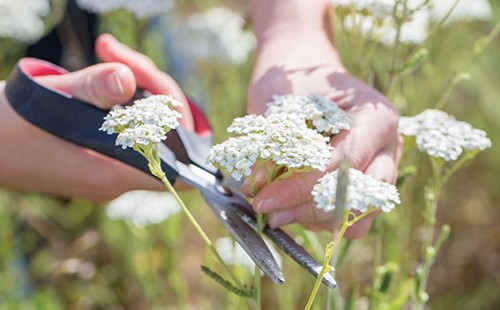
If you are interested in making your own essential oil, then you should be targeting the flowers, since they have more oil. You can simply snip off the flower tops with a pair of scissors. I find that this type of fiddly, delicate work is best done without gloves.
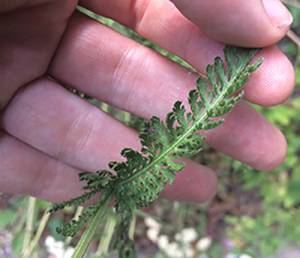
To dry the flowers, spread them out on some paper and place them in a well-ventilated room out of the sun.
But if your recipe calls for more tannins, then the leaves and stem are best. Tannins are compounds that give yarrow its ability to staunch the blood and decrease blood pressure. Tannins also help your body’s immune system respond to bacteria and germs. Usually, a sharp pair of scissors is enough to cut through the stem since you preferably want to harvest the freshest part of the plant. A good rule of thumb is to cut approximately halfway along the stem.
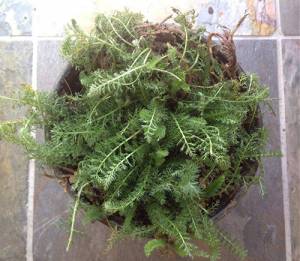
If you are harvesting from your own garden, then throw on a pair of gloves, and use pruning shears to cut the stems a few inches above the ground so that it looks tidier.
To dry the stems and leaves, just bundle a few stems together with some string and hang them in a well-ventilated room out of the sun.
Remember to leave the roots when foraging in the wild so that the plant can regenerate easier.
Uses for Yarrow
There’s evidence from a burial site dating back to at least 60,000 BC in Iraq that Neanderthals used yarrow. It proves that it has a long history and many of its uses are supported by research.
It has a number of traditional medicinal uses, most commonly for pain relief, treating cold and flu symptoms, reducing inflammation, improving circulation, and healing minor wounds.
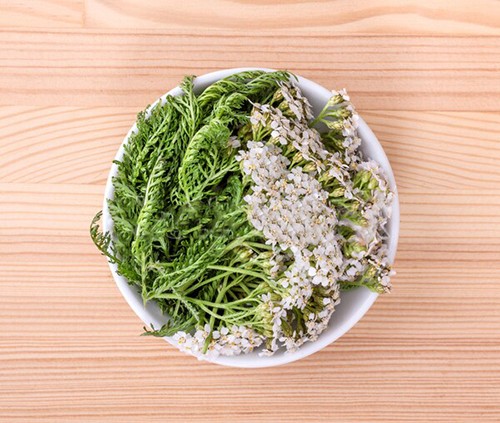
It also has been used traditionally as an antiseptic thanks to its anti-bacterial properties, as well as an effective method to staunch minor bleeding, and to treat skin conditions, such as eczema.
Yarrow is known as a “herb for women” because it has been used throughout history to regulate menstrual cycles and ease cramps.
Like all bitter foods, yarrow also stimulates digestion and aids the intestinal tract.
Precautions for Taking Yarrow
It is not recommended to take high doses of yarrow over an extended period of time. It contains a compound called thujone which is actually toxic, but it is considered safe to consume occasionally in low doses.
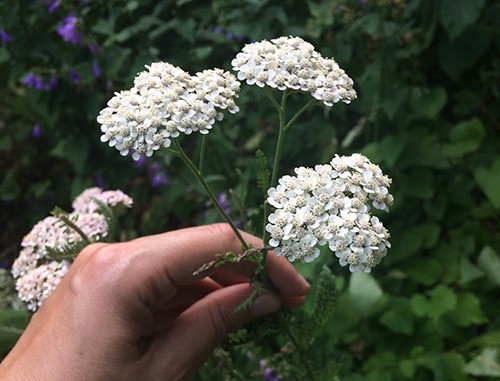
Do not ingest yarrow when pregnant as it may cause miscarriage.
If you’re allergic to daisies and ragwort, then there is a good chance that you will also be allergic to yarrow. Some people with sensitive skin or allergies can have issues handling fresh yarrow, which can cause a minor rash when also exposed to sunlight (phytophotodermatitis).
How to Prepare Yarrow
Brewing a tea is probably the easiest way to ingest yarrow, however, it has a very bitter taste, so it’s best to combine 1-2 teaspoons with mint, honey and/or lemon. It should be brewed for at least 20 minutes first, and then the other ingredients added afterward.
Instead of drinking the tea, some people dip bandages or cotton wool into it to make a warm or cold compress.
Despite its bitter taste, there are a few innovative ways to add small amounts of yarrow to your diet. You can throw a few fresh leaves into a salad or soup, or you can be really creative and add some to a basil or parsley pesto.
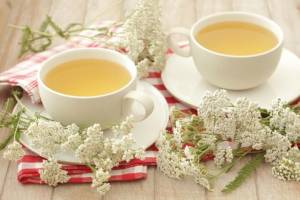
It is possible to avoid the bitter taste and still reap some of the benefits of yarrow by making either a poultice, a salve, a tincture or even incorporating it into a soap. These remedies can be made using either fresh or dried yarrow, but require a bit more effort than brewing a simple cup of tea.
You may also like:
 How to Tell the Difference Between Yarrow and the Poisonous Hemlock
How to Tell the Difference Between Yarrow and the Poisonous Hemlock
How to Make A Self-Sufficient Backyard on 1/4 of an Acre (Video)









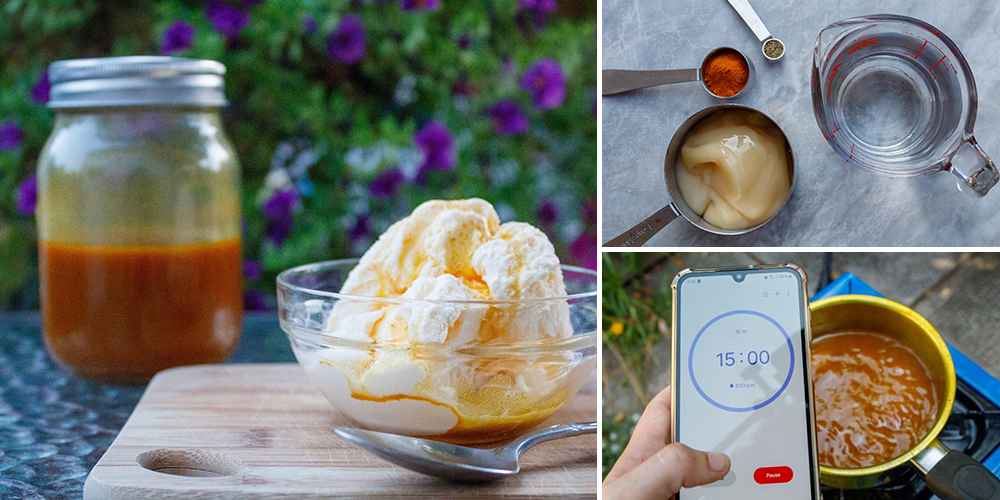
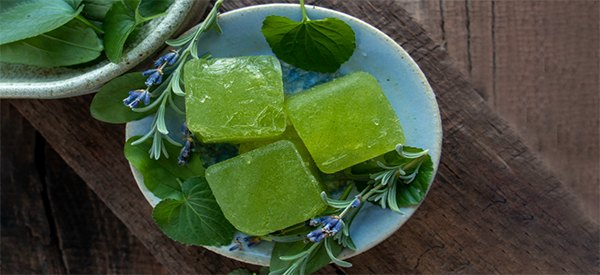
Really love your book and regular emailed excerpts on wild herbs and their uses
Hi Michael,
Thank you for your feedback.
We are glad you love our book and articles.
God bless!
I have been trying to get a user friendly print page and it simply will not work. I tried both clicking on the pdf. item at the end of the article as well as the printer icon for user friendly printing. I cannot get anything to download so I can print the article. This is the first time I have had any problems with printing. It also took a very long time to download the article from the internet. Is the problem on your end or is something else going on? Thank you.
Hi Jeanine,
Thank you for your interest in our work.
I am sorry to hear that you were not able to download the article.
I have checked and the Printing Button is working just fine. As soon as you press the printer icon and then “Download PDF” it will save in your computer.
God bless!
Thank you. I love it because I was introduced to herbs in my early age.
Hi Danuta,
Thank you so much for your feedback.
We are glad you like the article.
God bless!
. Thank you this is so very interesting and I look forward to being able to recognize the yellow plant as I go along and look forward to using it because it sounds like it can help in so many different ways your descriptions of being able to find the correct plant is so very important to me and I thank you
Hi Marilyn,
Thank you for your feedback.
We are glad you find the article useful.
God bless!
Thank you. I grow yarrow in my yard and did not know how to use it!
Hi Debbie,
Thank you for your comment.
We are glad you find the article useful.
God bless!
I wish you had webinars. You are so talented and it is fun to watch/learn from you.
I have used Yarrow, in a cream made with olive oil and she’s butter as a mosquito repellent. I love in Minnesota, our state bird is often referred to as our large mosquito. It works, I, along with my friends and family have not been bitten by them in years. I learned of it by taking a botanical medicine class at the University of Minnesota.
Aye, Mary.
So glad. You’re ‘broadcasting’ in cyber.Uncommonly generous of You and thoughtful!
Best,Patrick Anchorage
Do u care to share the recipe plz… ???
I have used yarrow for years to treat my children and my self for the common cold. It works wonderfully. I was introduced to this wild herb by people who lived on an Indian reservation in New Mexico. Since then, I have been very interested in harvesting wild herbs to use for my self. I find your information to be more informative than any other book on medicinal herbs. Thankyou so much for sharing your knowledge.
Yarrow was used by the Greeks during the Trojan War to help with the healing of battle wounds as a poultice where the leaves with their millfolium design helped stop bleeding and the use of its other properties helped with diarrheic problems. A very useful herb that predates the medicine known at the time even prior to the Iliad written by Homer. Even the Bible records yarrow as a bitter and useful herb It is probably well known by Noah and his sons. This herb had to have made its way into the ark with the feed for the livestock. Best Regards Tom
I would like to know how to make tincture and salves from yarrow, where can I find a recipe? Thank you very much for your information, I find it very helpful for my family
Do the rosette leaves on the ground surrounding the yarrow stems have the same medicinal value as the leaves on the stems? I would love to harvest them as they seem larger and fuller than those on the stems but I didn’t know if they have the same amount of tannins?
I can’t tell you enough how much I am enjoying your book!
I have yarrow in my garden, but the blooms are yellowish. Is this the same as the white blooms? Is it still good for medicine? Or just ornamental?
Does Western Yarrow and the other Yarrows have the same medicinal properties?
Nicole is an amazing source of arcane knowledge on a multitude of beneficial herbs and the ones to avoid as well.
I love your emails. I reference your book several times each day.
You put this article rating circle and it messes up printing the article.
[…] What You Should Know About Foraging Yarrow […]
[…] What You Should Know About Foraging Yarrow […]